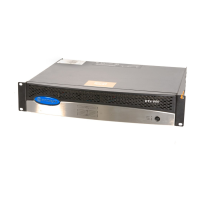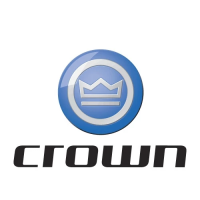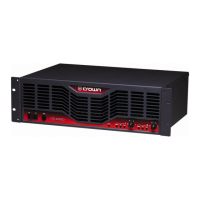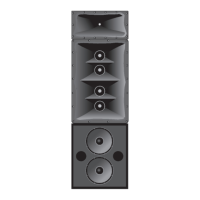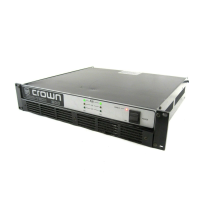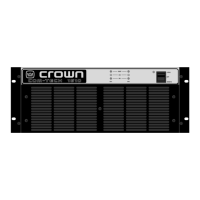Operation Manual
CTs 2-Channel Power Amplifiers
page 6
• Legendary Crown class I (BCA) and class
AB+B (Multi-Mode
®
) output topologies
offer the best in amplifier reliability. CTs
600/1200 use Class AB+B; CTs 2000/
3000 use Class I.
• Class I is the lowest distortion, lowest
noise, and highest performing topology
available among switch-mode amplifiers.
• Continuously-variable fans optimize cool-
ing efficiency.
• Three Year, No-Fault, Fully-Transferable
Warranty completely protects your invest-
ment and guarantees its specifications.
• Crown’s Profit Protection Plan guarantees
replacement of covered amps should they
fail at any time during the original three-
year warranty period (available in U.S.
only).
2 How to Use This
Manual
This manual provides you with the necessary
information to safely and correctly setup and
operate your amplifier. It does not cover every
aspect of installation, setup or operation that
might occur under every condition. For addi-
tional information, please consult Crown’s
Amplifier Application Guide (available online at
www.crownaudio.com), Crown Tech Support,
your system installer or retailer.
We strongly recommend you read all instruc-
tions, warnings and cautions contained in this
manual. Also, for your protection, please send
in your warranty registration card today. And
save your bill of sale—it’s your official proof of
purchase.
Features (continued from page 4)
• Switchable high-pass filter for each chan-
nel provides low-frequency roll off to elim-
inate step down transformer saturation
when used in distributed systems.
• Comprehensive array of indicators includ-
ing Power, Data, and Bridge; along with
Ready, Signal, Clip, Thermal and Fault for
each channel, provide accurate diagnos-
tics.
• Blue Power Indicator flashes if the ampli-
fier shuts off due to an under/over-voltage
condition on the AC mains.
• Advanced protection circuitry guards
against: shorted outputs, DC, mismatched
loads, general overheating, under-/over-
voltage, high-frequency overloads and
internal faults.
1 Welcome
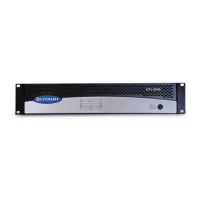
